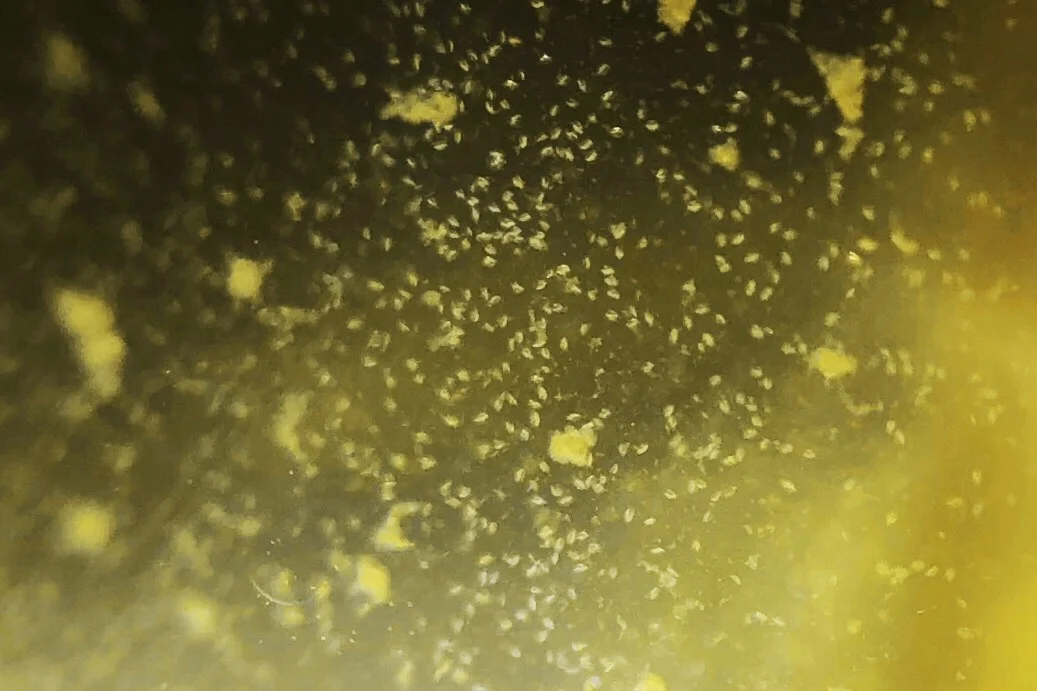INFUSORIA
I feed freshly hatched betta fry infusoria that I culture on my own as I find that vinegar eels can sometimes be nearly the same size as 1 day old betta fry. To culture, I fill a quart sized jar with established aquarium water and some vegetable matter. For the culture in this video I used grass, romaine lettuce, and some peas as the vegetable matter since it was the most available to me. This culture is about two weeks old.
vinegar eels
I started the culture in this video from a culture I hadn't touched in over a year. That old culture was half evaporated, not fed, and there were still enough eels to start a fresh culture. And as you can see from the video, it is swarming with eels in every direction. So to me vinegar eels are the easiest and hardiest live food to culture.
daphnia
I wish I were able to replace brine shrimp with daphnia and culture it in large scale (in a large pond dedicated to daphnia), since they are so much easier to maintain. Because unlike brine shrimp, I do not have to setup a new culture every single day. However in my current situation I can only culture them in a 10 gallon which produces enough daphnia to feed the fry every few days. I purchased daphnia moina online to start the culture in this video. They are cultured in a 10 gallon tank with clean aged water as well as some aquarium mulm from an established planted tank. Along with the daphnia moina are a couple daphnia pulex (much bigger than moina) that I hatched from eggs, scuds, and ramshorn snails. I feed the tank banana peels and zucchini which the scuds and snails break down.
BRINE SHRIMP
/under construction/
MOSQUITO LARVAE
These are my favorite live foods for bettas. The larvae are free, easy to maintain, and come in a variety of sizes so bettas ranging from weeks old to years old can all eat them sufficiently as a meal. Mosquito larvae molt as they grow, as you can see in the photo below, they pass through four instars and then become pupae (which I also feed to bettas in the rare case that they get to that stage since I harvest the larvae everyday). That is why they are so versatile in feeding due to the distinguishable size differences. To have my own supply of mosquito larvae, I put a large bucket outside during the warmer seasons and let it fill naturally with rainwater. Then I let nature run its course and eventually end up with a sufficient amount of mosquito larvae and some bloodworms for everyday harvesting.
Photo from: http://www.cmcd.org/biology-2/biology/
bloodworms
/under construction/
WHITE WORMS
/under construction/




